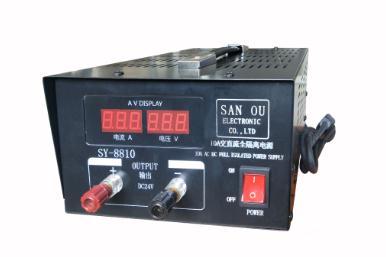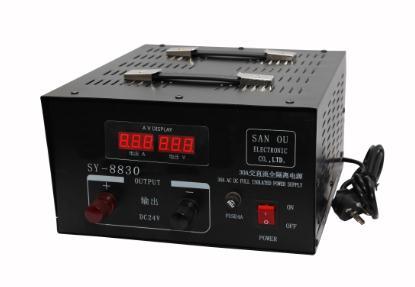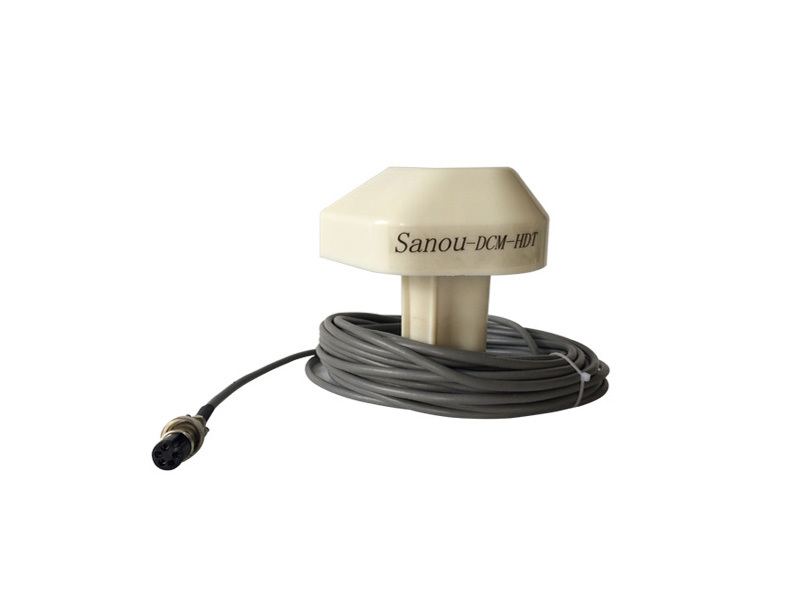News Center
How a 550W Constant Voltage Inverter Can Enhance Your Energy Management
How a 550W Constant Voltage Inverter Can Enhance Your Energy Management
Table of Contents
- Introduction to 550W Constant Voltage Inverters
- What is a Constant Voltage Inverter?
- How Does a 550W Constant Voltage Inverter Work?
- Advantages of Using a 550W Constant Voltage Inverter
- Applications of 550W Constant Voltage Inverters
- Optimizing Energy Management with 550W Inverters
- Installation and Maintenance Tips
- Frequently Asked Questions
- Conclusion
Introduction to 550W Constant Voltage Inverters
In the ever-evolving landscape of energy management, integrating efficient technologies is essential for sustainability and cost-effectiveness. The **550W constant voltage inverter** has emerged as a key player in this domain, offering reliable power conversion for various applications. This article delves into how a 550W inverter can significantly enhance your energy management strategies, making it a valuable addition to both residential and commercial energy systems.
What is a Constant Voltage Inverter?
A **constant voltage inverter** is a device that converts direct current (DC) into alternating current (AC) while maintaining a consistent output voltage. This functionality is crucial for powering devices that require stable voltage levels for optimal performance. Unlike standard inverters, which may fluctuate in output, a constant voltage inverter ensures that the voltage remains steady, providing a dependable source of power for sensitive equipment.
Types of Inverters
Inverters come in various forms, with **pure sine wave**, **modified sine wave**, and **square wave** being the most common types. Each type serves different purposes:
- **Pure Sine Wave Inverters:** Ideal for sensitive electronic devices, providing clean and stable power.
- **Modified Sine Wave Inverters:** Suitable for less sensitive devices and typically more cost-effective.
- **Square Wave Inverters:** Used for basic applications but can lead to inefficiencies in sensitive equipment.
The **550W constant voltage inverter** primarily falls under the category of pure sine wave inverters, making it an excellent choice for applications that demand high reliability.
How Does a 550W Constant Voltage Inverter Work?
Understanding the operation of a **550W constant voltage inverter** is vital for leveraging its benefits. The inverter operates through several key components and processes:
Key Components
1. **DC Input Source:** Typically derived from batteries or solar panels.
2. **Inverter Circuitry:** Converts the DC input into AC output while ensuring a stable voltage.
3. **Output Filter:** Smooths the output waveform to achieve a pure sine wave.
4. **Control System:** Regulates the output voltage and monitors system performance.
Operational Process
The inverter first receives DC power from a source, such as solar panels or batteries. The inverter's internal circuitry then converts this energy into AC power. Through a combination of switching techniques and filtering, it ensures that the output voltage remains constant, even when there are fluctuations in the input voltage. This steady output is crucial for powering appliances that operate under strict voltage requirements.
Advantages of Using a 550W Constant Voltage Inverter
The integration of a **550W constant voltage inverter** into your energy management system offers numerous advantages:
1. Energy Efficiency
With the ability to maintain a constant voltage, these inverters minimize energy loss during the conversion process, ultimately leading to enhanced energy efficiency.
2. Cost Savings
By optimizing energy consumption, a **550W inverter** can help reduce electricity bills. The inverter's efficient performance means less energy waste, translating to lower costs over time.
3. Support for Renewable Energy Sources
Many users pair these inverters with renewable energy systems, such as solar panels, allowing for effective energy storage and usage. This synergy promotes sustainability and decreases reliance on fossil fuels.
4. Versatility
The **550W constant voltage inverter** can be utilized in various applications, from powering household appliances to supporting small businesses, making it a versatile solution for energy management.
5. Reliable Power Supply
The steady voltage output ensures that sensitive electronic devices function optimally, reducing the risk of damage or malfunction due to voltage fluctuations.
Applications of 550W Constant Voltage Inverters
The adaptability of the **550W constant voltage inverter** allows it to cater to a wide range of applications across different sectors:
1. Residential Use
In homes, these inverters can power essential appliances, lighting systems, and entertainment devices, providing reliable electricity, especially during outages.
2. Commercial Use
Businesses can utilize these inverters to ensure minimal downtime for equipment, thereby maintaining productivity and safeguarding investments in technology.
3. Solar Energy Systems
By integrating a **550W inverter** with solar panels, users can effectively utilize renewable energy, store excess power, and reduce their carbon footprint.
4. Off-Grid Applications
For remote locations or during natural disasters, a **550W constant voltage inverter** offers a reliable power solution, allowing for the operation of critical devices when traditional power sources are unavailable.
Optimizing Energy Management with 550W Inverters
To maximize the benefits of a **550W constant voltage inverter**, consider the following strategies for effective energy management:
1. Monitor Energy Usage
Implement monitoring systems to track energy consumption patterns. This data can inform decisions about when and how to use the inverter most effectively.
2. Pair with Energy Storage Solutions
Combining a **550W inverter** with battery storage systems enhances energy availability and provides backup power during outages.
3. Regular Maintenance
Conduct regular maintenance checks to ensure the inverter operates efficiently. This includes inspecting connections, cleaning components, and monitoring performance.
4. Utilize Smart Technology
Incorporate smart home devices to automate energy management processes. These technologies can optimize energy usage based on real-time data and consumption patterns.
5. Educate Users
Inform all users about the inverter's functionality and best practices for energy use. Awareness can lead to better energy conservation efforts.
Installation and Maintenance Tips
Proper installation and maintenance are crucial for the longevity and efficacy of a **550W constant voltage inverter**.
Installation Guidelines
1. **Choose the Right Location:** Ensure a well-ventilated area to prevent overheating.
2. **Follow Manufacturer Instructions:** Adhere to the specific installation guidelines provided by the manufacturer.
3. **Utilize Appropriate Wiring:** Use the correct gauge of wire to handle the inverter's power output safely.
Maintenance Practices
1. **Regular Inspections:** Check connections and inspect for any signs of wear or damage.
2. **Clean Components:** Dust and debris can affect performance; regular cleaning helps maintain efficiency.
3. **Test Functionality:** Periodically test the inverter to ensure it operates as expected.
Frequently Asked Questions
1. What devices can a 550W constant voltage inverter power?
A 550W inverter can power various devices, including small appliances, lighting, and electronics that require stable voltage.
2. How do I choose the right inverter for my needs?
Consider your power requirements, the type of devices you will use, and whether you need features like pure sine wave output for sensitive equipment.
3. Can I use a 550W inverter with solar panels?
Yes, a 550W constant voltage inverter is ideal for solar panel systems, allowing for efficient energy storage and usage.
4. How long can a 550W inverter run devices?
The runtime depends on the capacity of the battery or power source used with the inverter and the total wattage of the connected devices.
5. Is professional installation necessary?
While DIY installation is possible for those with technical skills, professional installation is recommended to ensure safety and optimal performance.
Conclusion
In summary, a **550W constant voltage inverter** serves as a powerful ally in enhancing energy management across various applications. By understanding its operation, advantages, and best practices, users can harness its capabilities to optimize energy consumption, reduce costs, and promote sustainable practices. Whether for residential, commercial, or off-grid applications, investing in a 550W inverter is a forward-thinking approach to energy management that aligns with modern energy needs. Embracing this technology today can pave the way for a more energy-efficient and environmentally friendly tomorrow.
Related News
Understanding the Benefits of a 1 in 4 Out Signal Distributor for Electronic Components
Understanding the Benefits of a 1 in 4 Out Signal Distributor for Electronic Components Table of Contents 1. Introduction to Signal Distribution 2. What is a 1 in 4 Out Signal Distributor? 3. Key Advantages of Using a 1 in 4 Out Signal Distributor 3.1 Enhanced Signal Integrity 3.2 Improved Signal Distribution Efficiency 3.3 Flexibility in System Desi
Understanding the 1 in 10 Out Signal Distributor: A Key Component in Optoelectronic Applications
A 1 in 10 out signal distributor is a specialized electronic device that takes a single input signal and replicates it across multiple output channels—in this case, ten outputs. This function is crucial in various applications, including telecommunications, broadcasting, and data transmission systems. The ability to distribute a single signal to multiple outputs ensures that information can reach
Unlocking the Benefits of the Furuno 1831 Radar with a Quality 24 Pin Square Plug
Unlocking the Benefits of the Furuno 1831 Radar with a Quality 24 Pin Square Plug Table of Contents 1. Introduction to Furuno 1831 Radar 2. Key Features of the Furuno 1831 Radar 3. Advantages of Using a Quality 24 Pin Square Plug 4. Installing the Furuno 1831 Radar with a 24 Pin Square Plug 5. Maintenance Tips for Optimal Performance 6. Troubleshooting Common




